Welcome to one of the most active flamenco sites on the Internet. Guests can read most posts but if you want to participate click here to register.
This site is dedicated to the memory of Paco de Lucía, Ron Mitchell, Guy Williams, Linda Elvira, Philip John Lee, Craig Eros, Ben Woods, David Serva and Tom Blackshear who went ahead of us.
We receive 12,200 visitors a month from 200 countries and 1.7 million page impressions a year. To advertise on this site please contact us.
|

|
|
Cultural Flamenco Questions Thread
|
You are logged in as Guest
|
|
Users viewing this topic: none
|
|
Login  | |
|

   
gmburns
Posts: 157
Joined: Nov. 20 2012

|
 RE: Cultural Flamenco Questions Thread (in reply to Leñador) RE: Cultural Flamenco Questions Thread (in reply to Leñador)
|
|
|
quote:
ORIGINAL: Lenador
Ah, I see what he's saying. Not that the guitars couldn't stay I'm tune but that the singers were forced to sing in a key they wernt necessarily comfortable in due to lack of cejilla. The cejilla is a little thing we slide up and down the fretboard to change the key. Can't attest to the validity of the statement but I see what he's saying.
This is what I was trying to say / ask. Howson wasn't declaring this is the truth either, just that another writer alluded to it. To me, it sounds reasonable, but then again I'm still learning. Which begged my question about how things have changed.
I can perfectly imagine flamenco being possible with just about any instrument, depending on how the art is applied. I can also imagine musicians wanting to play using the older methods. I guess I'm asking if there is a difference in sound, quality, technical ability (if it's harder or easier one way or the other), or if it matters at all. It seems from the responses here is that there can be a difference but at least those on this site don't really pay attention to it. I imagine this is a result of the audience that one is playing for.
I'm also a climber, and climbing technology has advanced significantly over the years. Most purists tend to favor modern equipment because it actually leaves less damage on the rock than older equipment (bar using something like bolts, which is another conversation - see below). You'll find very few purists tying in with swami belts (with the rope wrapped around your waist and chest), for example, and instead use a modern harness (rope ties into the harness).
However, there was a development several decades ago that brought pounding "permanent" bolts into the rock that helped facilitate a climbing explosion beginning in the 1980s. This has continued to cause a lot of controversy, and there developed a split among climbers in the ensuing decades about what kind of equipment was appropriate to use. This was only very partially a safety issue (traditionalists have no problem with safety), but more of an aesthetic and / or preservation issue. Some people choose to use bolts for various reasons: safety, brings access to the masses, allows for less gear to be used over time, etc. Whereas others vehemently refuse to use or climb on bolts in order to preserve tradition and nature, among other reasons.
In the end, it's all climbing. Which equipment one climbs with depends on whom one is and whom one is climbing with. I am imagining something similar here with the types of guitars used, but it also seems it doesn't matter nearly as much as the example I gave above.
_____________________________
Greg Mason Burns - Artist
|
|
|
|
REPORT THIS POST AS INAPPROPRIATE |
Date Nov. 4 2013 16:43:55
 |
|

   
mark indigo
Posts: 3625
Joined: Dec. 5 2007

|
 RE: Cultural Flamenco Questions Thread (in reply to gmburns) RE: Cultural Flamenco Questions Thread (in reply to gmburns)
|
|
|
quote:
I can't argue either way. I don't know, but this is his quote from page 231: "Fernando de Triana writes that a hundred years ago [sic], before the cejilla was invented, singers always had to force their voices down or up to the key of the open guitar. That is how, he claims, the harsh and forced voice became a flamenco convention." (sic is in his quote, not mine)
The context of this quote comes in the appendix where he briefly explains the differences between classical guitar and flamenco guitar. This final sentence is merely a point about the cejilla.
Before the invention of the cejilla flamenco guitarists played using all twelve keys, according to the pitch of the singers' voices. At this time a phenomenally high level of virtuoso playing and knowledge of the fretboard, scales, intervals, arpegios, chords, harmony, transposition etc. was considered normal among flamenco guitarists.
All of this occurred before the advent of recording technology, and as flamenco communities were both illiterate and hermetically closed there are no written or audio records of the accompaniments and falsetas of this era.
With the invention of the cejilla, the flamenco guitar went through a period of atrophy, degeneration and simplification. Many guitarists chose to use only a few keys and use the cejilla to change the pitch for singers. For a while many retained the old knowledge in private and used the fashionable "por medio" and "por arriba" (A and E Phrygian) in public, but eventually the use of most other keys died out even in private gatherings.
The singers didn't care either way, and even encouraged the new more limited style as it restricted the virtuoso displays guitarists were often prone to, such as modulating around the cycle of fifths. Singers also found it easier to latch onto the similar sound of only a few sets of chord shapes and their associated sounds transposed with a cejilla.
It is only recently that guitarists have started once again to break out of the confines of just a few keys, much to the dismay of so-called "purists", though they have yet to reach the virtuosic heights of the much earlier golden age of the guitar.
_____________________________
|
|
|
|
REPORT THIS POST AS INAPPROPRIATE |
Date Nov. 4 2013 16:44:34
 |
|

   
gmburns
Posts: 157
Joined: Nov. 20 2012

|
 RE: Cultural Flamenco Questions Thread (in reply to mark indigo) RE: Cultural Flamenco Questions Thread (in reply to mark indigo)
|
|
|
quote:
ORIGINAL: mark indigo
quote:
I can't argue either way. I don't know, but this is his quote from page 231: "Fernando de Triana writes that a hundred years ago [sic], before the cejilla was invented, singers always had to force their voices down or up to the key of the open guitar. That is how, he claims, the harsh and forced voice became a flamenco convention." (sic is in his quote, not mine)
The context of this quote comes in the appendix where he briefly explains the differences between classical guitar and flamenco guitar. This final sentence is merely a point about the cejilla.
Before the invention of the cejilla flamenco guitarists played using all twelve keys, according to the pitch of the singers' voices. At this time a phenomenally high level of virtuoso playing and knowledge of the fretboard, scales, intervals, arpegios, chords, harmony, transposition etc. was considered normal among flamenco guitarists.
All of this occurred before the advent of recording technology, and as flamenco communities were both illiterate and hermetically closed there are no written or audio records of the accompaniments and falsetas of this era.
With the invention of the cejilla, the flamenco guitar went through a period of atrophy, degeneration and simplification. Many guitarists chose to use only a few keys and use the cejilla to change the pitch for singers. For a while many retained the old knowledge in private and used the fashionable "por medio" and "por arriba" (A and E Phrygian) in public, but eventually the use of most other keys died out even in private gatherings.
The singers didn't care either way, and even encouraged the new more limited style as it restricted the virtuoso displays guitarists were often prone to, such as modulating around the cycle of fifths. Singers also found it easier to latch onto the similar sound of only a few sets of chord shapes and their associated sounds transposed with a cejilla.
It is only recently that guitarists have started once again to break out of the confines of just a few keys, much to the dismay of so-called "purists", though they have yet to reach the virtuosic heights of the much earlier golden age of the guitar.
That's a great response. Thanks Mark!
So you're saying that people are trying to bring back that old-style of playing?
_____________________________
Greg Mason Burns - Artist
|
|
|
|
REPORT THIS POST AS INAPPROPRIATE |
Date Nov. 4 2013 16:50:08
 |
|

   
Ricardo
Posts: 14797
Joined: Dec. 14 2004
From: Washington DC

|
 RE: Cultural Flamenco Questions Thread (in reply to mark indigo) RE: Cultural Flamenco Questions Thread (in reply to mark indigo)
|
|
|
quote:
ORIGINAL: mark indigo
quote:
I can't argue either way. I don't know, but this is his quote from page 231: "Fernando de Triana writes that a hundred years ago [sic], before the cejilla was invented, singers always had to force their voices down or up to the key of the open guitar. That is how, he claims, the harsh and forced voice became a flamenco convention." (sic is in his quote, not mine)
The context of this quote comes in the appendix where he briefly explains the differences between classical guitar and flamenco guitar. This final sentence is merely a point about the cejilla.
Before the invention of the cejilla flamenco guitarists played using all twelve keys, according to the pitch of the singers' voices. At this time a phenomenally high level of virtuoso playing and knowledge of the fretboard, scales, intervals, arpegios, chords, harmony, transposition etc. was considered normal among flamenco guitarists.
All of this occurred before the advent of recording technology, and as flamenco communities were both illiterate and hermetically closed there are no written or audio records of the accompaniments and falsetas of this era.
With the invention of the cejilla, the flamenco guitar went through a period of atrophy, degeneration and simplification. Many guitarists chose to use only a few keys and use the cejilla to change the pitch for singers. For a while many retained the old knowledge in private and used the fashionable "por medio" and "por arriba" (A and E Phrygian) in public, but eventually the use of most other keys died out even in private gatherings.
The singers didn't care either way, and even encouraged the new more limited style as it restricted the virtuoso displays guitarists were often prone to, such as modulating around the cycle of fifths. Singers also found it easier to latch onto the similar sound of only a few sets of chord shapes and their associated sounds transposed with a cejilla.
It is only recently that guitarists have started once again to break out of the confines of just a few keys, much to the dismay of so-called "purists", though they have yet to reach the virtuosic heights of the much earlier golden age of the guitar.
Where did you gather that from? Never heard it in my freakin life, and also disagree that this was truly the case.
Ricardo
_____________________________
CD's and transcriptions available here:
www.ricardomarlow.com
|
|
|
|
REPORT THIS POST AS INAPPROPRIATE |
Date Nov. 4 2013 17:45:32
 |
|
 New Messages New Messages |
 No New Messages No New Messages |
 Hot Topic w/ New Messages Hot Topic w/ New Messages |
 Hot Topic w/o New Messages Hot Topic w/o New Messages |
 Locked w/ New Messages Locked w/ New Messages |
 Locked w/o New Messages Locked w/o New Messages |
|
 Post New Thread
Post New Thread
 Reply to Message
Reply to Message
 Post New Poll
Post New Poll
 Submit Vote
Submit Vote
 Delete My Own Post
Delete My Own Post
 Delete My Own Thread
Delete My Own Thread
 Rate Posts
Rate Posts
|
|
|
Forum Software powered by ASP Playground Advanced Edition 2.0.5
Copyright © 2000 - 2003 ASPPlayground.NET |
0.078125 secs.
|


 Printable Version
Printable Version



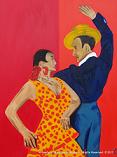



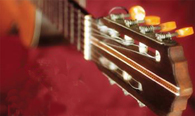

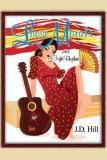

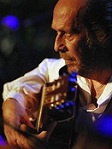

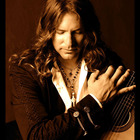
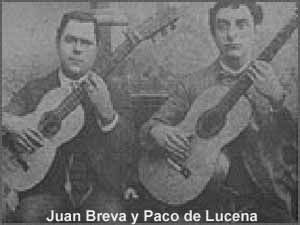
 New Messages
New Messages No New Messages
No New Messages Hot Topic w/ New Messages
Hot Topic w/ New Messages Hot Topic w/o New Messages
Hot Topic w/o New Messages Locked w/ New Messages
Locked w/ New Messages Locked w/o New Messages
Locked w/o New Messages Post New Thread
Post New Thread